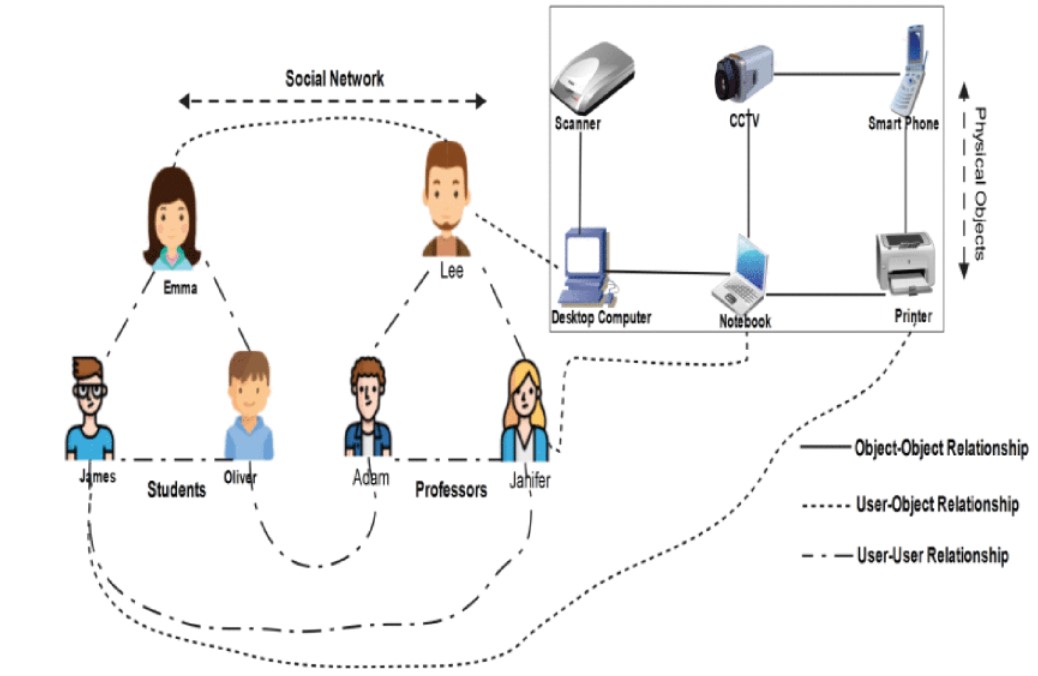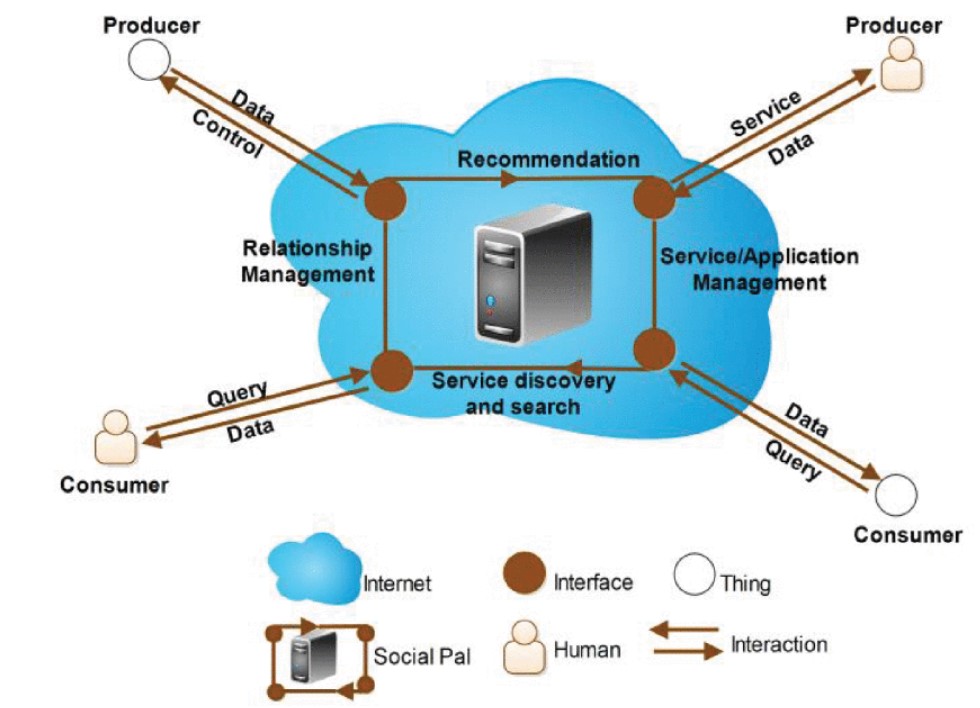Internet of Things (IoT) connected devices are increasingly becoming part of our daily lives. While smart devices can communicate with one another, and collect and share data, they can’t create social relationships – until now. A team at the Yeungnam University in Gyeongsan, Korea has developed the “Social Pal” platform, combining IoT and social networks to help smart objects interact and form relationships with each other.
Social IoT (SIoT) allows devices to collaborate, share resources or make recommendations to one another, just like humans do when they use social networks. While a number of research teams have begun to investigate SIoT, Social Pal is unique because it was developed for institutional use—for businesses or universities. Social Pal is designed to manage social object relationships (SoR) and ownership object relationships (OOR). The former refers to the relationship between objects where their owners are different, but regularly come in contact with each other. This can be seen among classmates or colleagues that run in similar circles. OOR refers to the connection between heterogeneous devices, where the same user owns all the devices, such as a smartphone and computer.
On the team’s proposed platform, each object has the ability to create a relationship with another object, either individually or in a group that share similar “interests.” As illustrated in Figure 1, the object can take the form of a smartphone, laptop, closed-circuit television (CCTV) or a printer, for example, and form connections with other objects in an OOR or a SoR where professors and students are introduced.

Figure 1: The components of the social pal
According to Farhan Amin, a researcher in the department of information and communication engineering at Yeungnam University, once connections are formed within the Social Pal, a range of services can be implemented. In a university setting, the platform can determine the shortest navigation path to a given building, where the nearest working printer is, as well as how homogeneous and heterogeneous devices like temperature and humidity sensors connect to create the optimal classroom environment. Devices share and exchange data with the platform to create the desired outcome of the user.
Figure 2 outlines the general design of Social Pal and how each component works together to create the ideal connected system for an institution.

Figure 2: The general architecture design of Social Pal
The first component of the social network is the actor or the user that interacts with Social Pal. In a university setting, this could be a professor or student. The second is the Social Pal platform that is used to determine the objects in the network so services can be exchanged. The platform is also where recommendations are given if a service is unavailable and where relationships in a system are managed. The third component is the interface where actors can form new connections and data is shared. The fourth and final component is the internet, which provides an open access connection to all entities in the platform.
While Social Pal isn’t yet widely deployed, other SIoT solutions are already in use around the world. According to Farhan, a pilot program in Santander, Spain is utilizing SIoT to enhance the garbage collection processes in specific neighborhoods. This is just one of the ways that the technology can be leveraged to build relationships between smart devices. Energy, transportation, and utilities are among many other industries expected to benefit from SIoT networks as they become more common.
For more information on Social IoT, visit the IEEE Xplore digital library.





